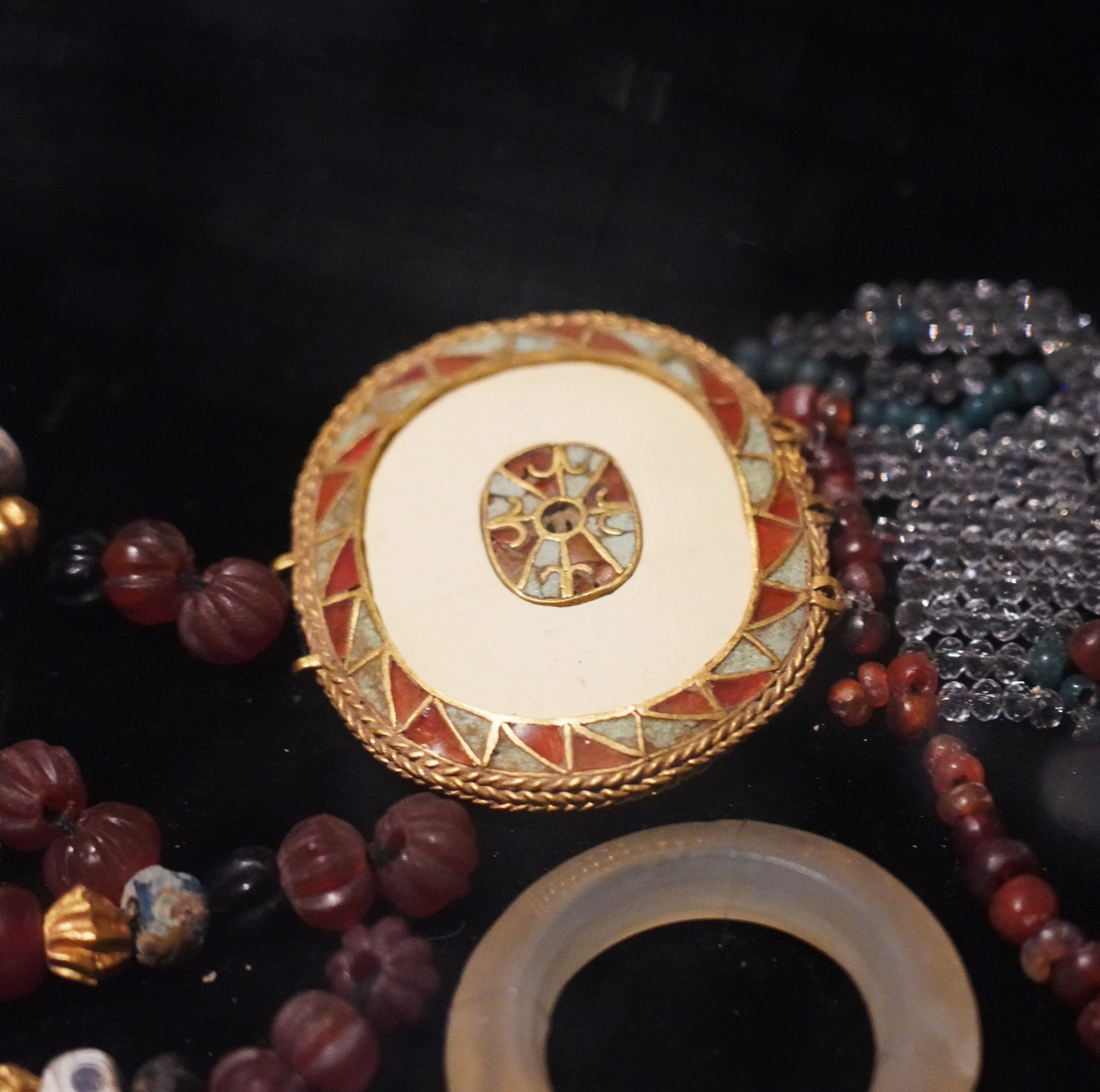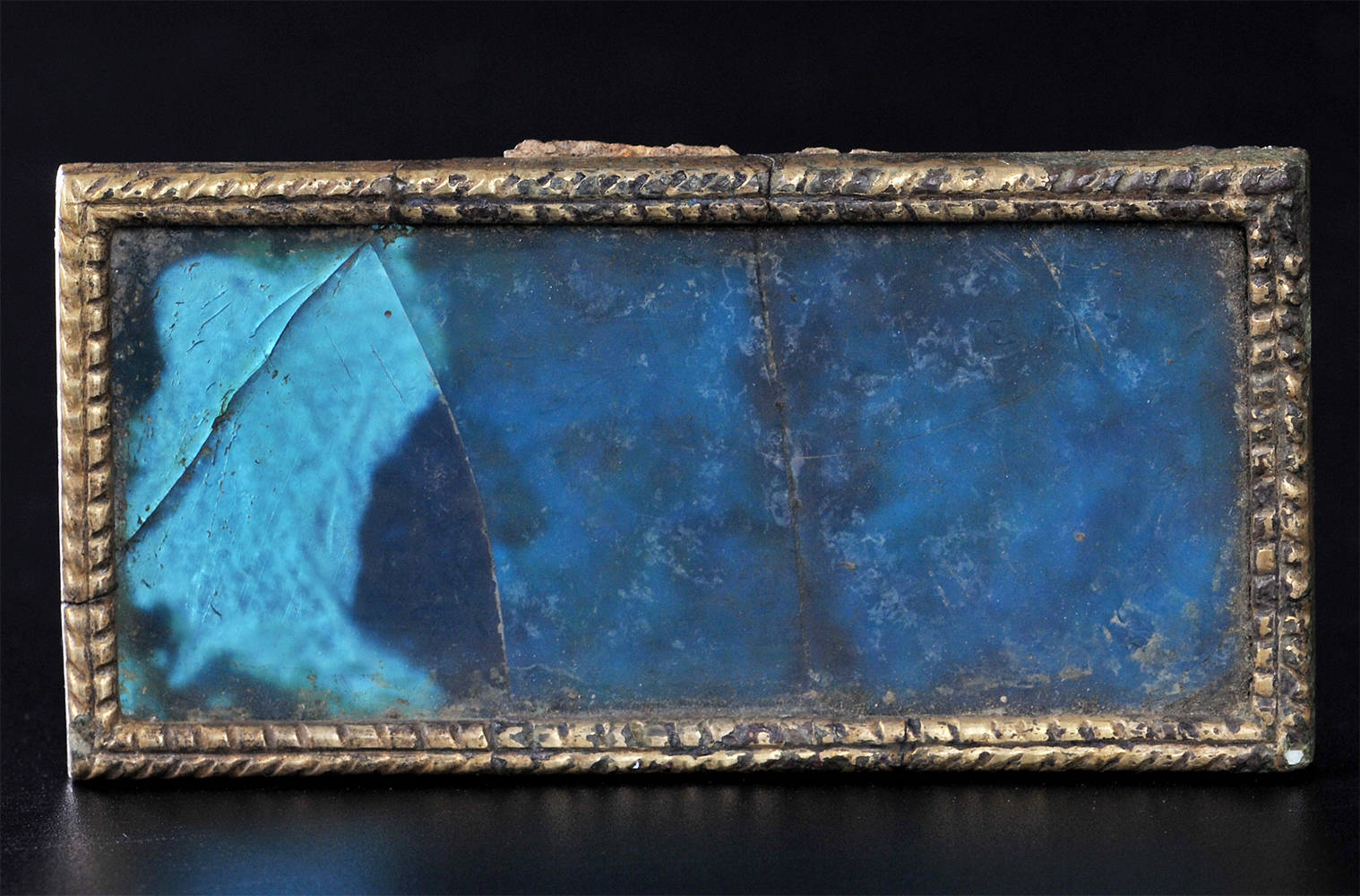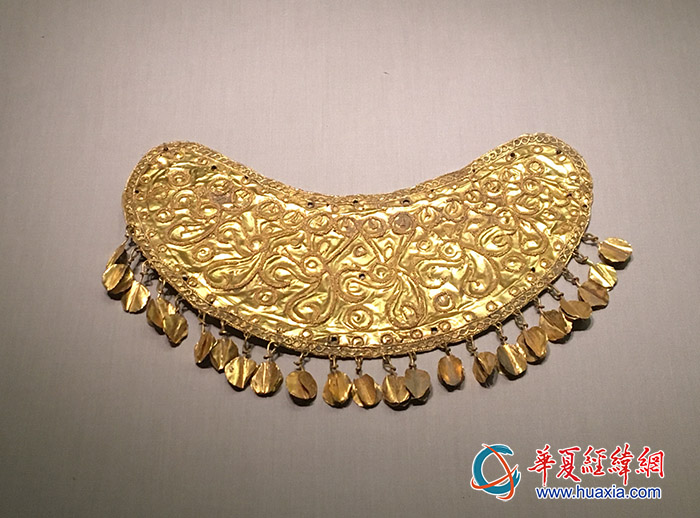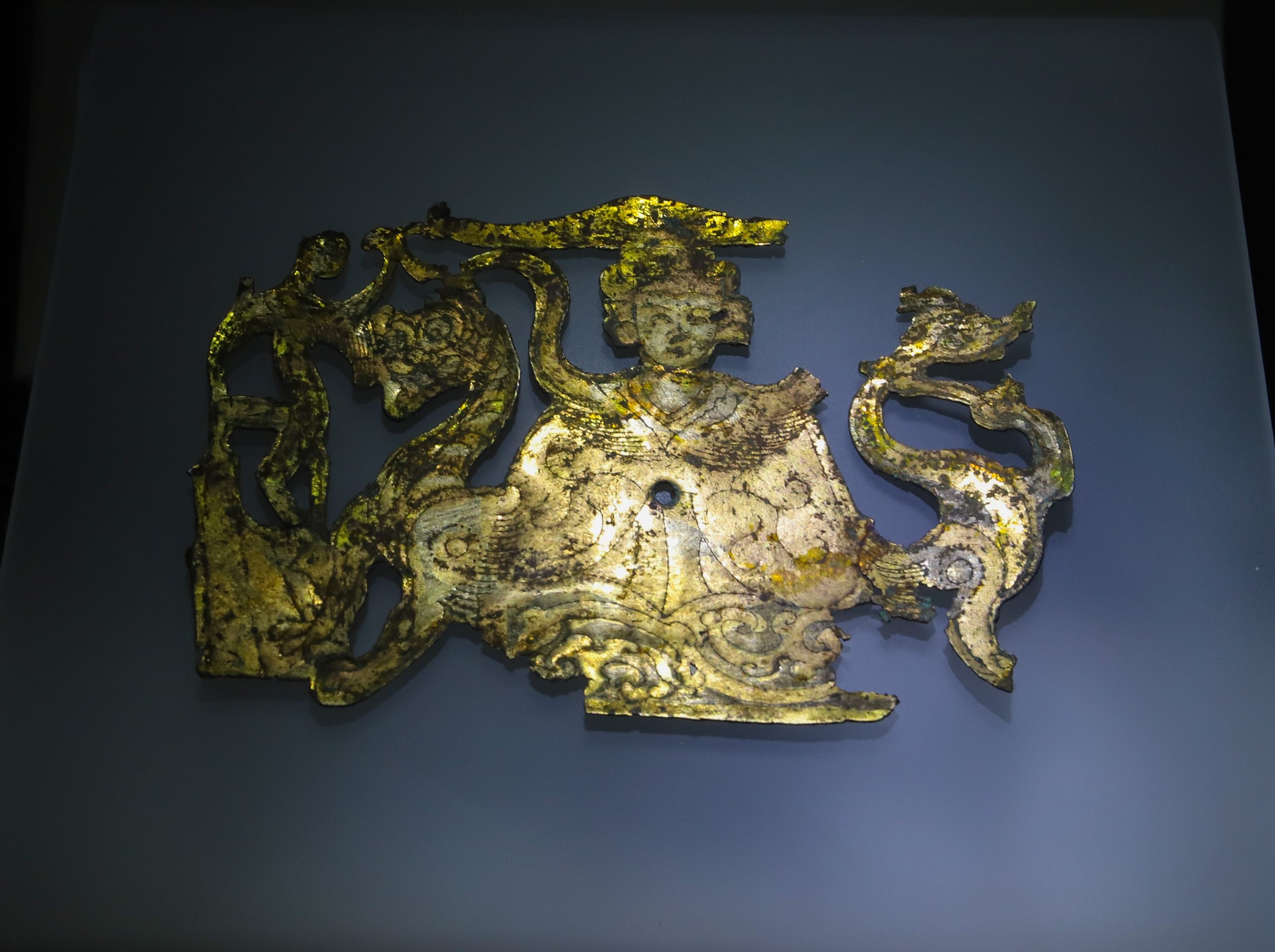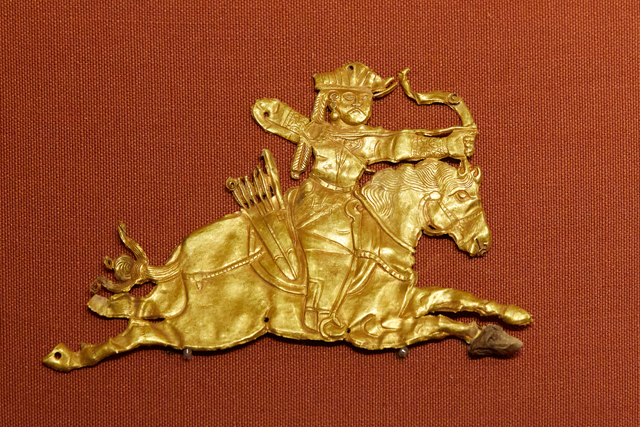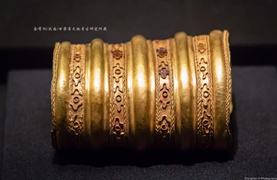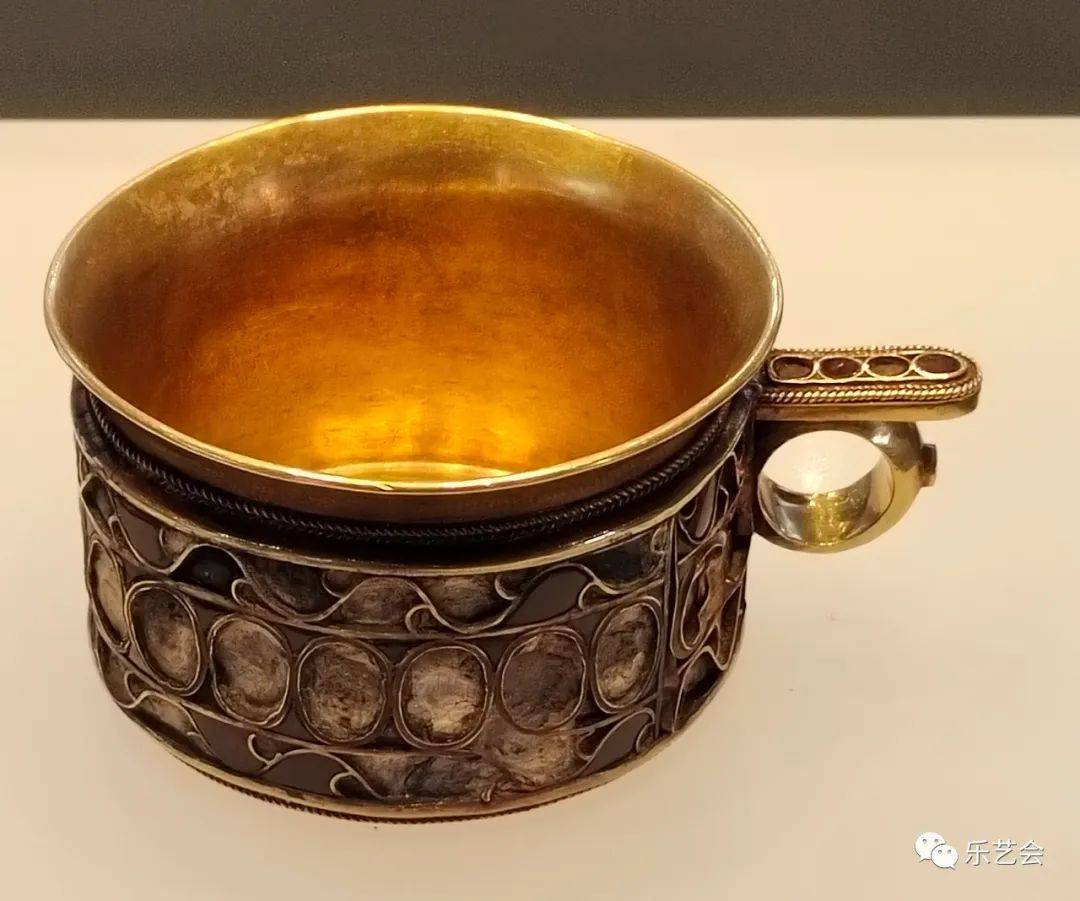“Sogdian burial, unearthed in Guyuan (固原), Ningxia (寧夏), modern Northwest China, Sui or Tang Empire, both of which are founded by the Eurasian nomad Xianbei (鮮卑), c. 6-10 Cent. AD. The gold jaw support, alone with the gold ornament, revealed an old burial custom in Inner Asia.” Gavin Lee Twitter


See also an article by Shing Mueller “Chin-Straps of the Early Northern Wei: New Perspectives on the Trans-Asiatic Diffusion of Funerary Practices” academia.edu
“Based on an excavated bronze chin-strap from the Northern Wei tomb M107 at the cemetery south of Datong, the author examines the custom of using such a metal device to hold the jaw of the deceased in China. The starting point of the custom in the Asian part of the Eurasian continent was probably the Tarim Basin in the 8th century BC, but there are significant earlier parallels in West Asia and the Mediterranean world. The custom was brought by tribal members of the Tuoba-Xianbei no later than the 5th century AD to the Northern Wei capital, Pingcheng (modern Datong), where the use of chin-straps was first evidenced in China proper.”

Yihe-nur cemetery, Inner Mongolia, 5th-6th century.

